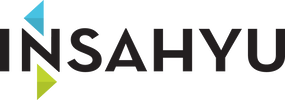BLOG
Our blog will feature our Healthy Lifestyle article on Ang Peryodiko Newspaper: Rehab and Exercise Tips. This will also be a guide to our Rehab and Therapy clients.
|
2/22/2016 0 Comments The Effects of Poor Posture Healthy Lifestyle Written by: Nicole Skakun MSC- PT, Physiotherapist The Effects of Poor Posture Many of us are subject to poor posture from things we do every day – for example, desk/office work, sitting on the couch watching television, texting, etc! The postures we are in during these activities tend to cause muscle imbalances around our spine and upper body, which can eventually lead to a stiff back or sore upper shoulders. The most common “poor posture” includes a rounded upper back, forward head poke, and rolled in shoulders. When our posture is corrected and more upright, it reduces the stress and strain on the surrounding muscles and joints. There are many things we can do to help correct our posture. Most exercises focus on stretching the tight muscles on the chest, and strengthening the muscles in the back to help restore a more upright, balanced posture. The first exercise is a stretch for your pectoral muscles. Lean forward until you feel a gentle stretch in the front of your chest. Hold for 60 seconds. Repeat this 2-3 times daily The second exercise is a strengthening exercise for your back muscles. Squeeze your shoulder blades together and down. Hold for 5 seconds and relax. Repeat this 10 times. Do this 2-3 times every second day. Another simple way to help correct posture is to add a lumbar support cushion to your lower back. When your lower spine is properly aligned, the rest of the spine tends to correct itself as well. Lastly, don’t forget to be active! Most of the activities that cause poor posture are sedentary activities – keeping active and being mindful of your posture will help decrease your chance of associated muscle and joint pain.
0 Comments
2/22/2016 0 Comments When in doubt, sit them out
If you have an athletic child, it is important to know how this condition can affect a child. Also, it is important to recognize someone with a concussion especially if your child participate in contact sports. Aside from football, many contact sports like volleyball, hockey, soccer, rugby and basketball have a risk for head injuries.
As parents, it is important to know what you need to look for when managing a concussion. Remember that the athlete does not have to have all the signs and symptoms they may only have one or a few. To help you better understand which signs and symptoms to look for in a child with a concussion, here are some examples. If you think your child has a concussion, you need to bring them to a doctor to be assessed. Do not leave them alone. Teachers can be made aware of the condition of the child so they can monitor abnormal behaviors. However, if the symptoms persist for more than 2 weeks, take your child back to his/her family doctor. The doctor will be providing you with further instructions that you can follow for the home management program. There are different types of concussion that can be detect by the specialist. The severity of it can be evaluated by the doctor and will refer you to a neurosurgeon that specializes in concussion. Depending on the severity of the concussion, you will be advised by your doctor to manage the child’s condition until the signs and symptoms go away. They may also recommend to see an Athletic Therapist for sports rehabilitation so that they can go back to play/school safely. The place to go that specializes in sports rehab for concussion is at the Sport Medicine Centre located at Sports for Life building. |
AuthorTeam Insahyu: Certified Athletic Therapists. CategoriesAll Anatomy Arms Athletic Tape Athletic Therapy Back Pain Conditions Elbows Exercises Healthy Lifestyle Hips Knees Orthotics Pregnancy Rehab Tips Running Shoulders Stretching Tips Treatments Winter Wrists |
Location |
|
